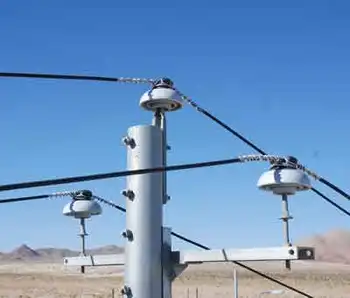Major Utilities Call on Energy Department to Strengthen Energy-Saving Transformer
WASHINGTON, D.C. - Environmental and energy-efficiency advocates today praised eight utility companies for supporting strong, new national energy-efficiency standards for electric distribution transformers.
In a letter to U.S. Energy Secretary Samuel Bodman, the companies (PNM Resources, Exelon, Public Service Electric and Gas, Pacific Gas and Electric, Baltimore Gas and Electric, New York Power Authority, Sacramento Municipal Utility District and Snohomish Public Utility District #1) urged the department to substantially strengthen the agency's proposal for minimum-efficiency standards for transformers.
"For these utilities, energy efficiency is more than just a feel good slogan," said Katherine Kennedy, senior attorney, Natural Resources Defense Council. "They are calling for tougher efficiency standards for equipment that they have to buy. That's because they understand that the federal government's weak proposal would leave billions in energy savings and huge gains in system reliability sitting on the table. By being the first utilities to step up and support a strong standard on transformers, these leaders are showing the rest of the industry how to walk the walk on efficiency."
More than 40 million distribution transformers located on utility poles and cement pads across the United States serve the crucial function of reducing electricity voltage to the levels needed to power homes and businesses. In August, DOE proposed a weak standard that falls substantially short of the levels the agency's own study shows would maximize economic savings. The agency is accepting comments through October 18 and will name the final standard next year.
Because all power travels through one or more transformers, even slight improvements in efficiency can yield huge savings. According to the DOE study, the standard supported by the companies would save 459 billion kilowatt-hours (about 50 percent more than the DOE proposal) and net $11.1 billion in savings (about $1.7 billion more than the DOE proposal) over 28 years. Once fully implemented, the annual electricity savings would be roughly enough to power all the households in Iowa.
"These leaders' support for standards affecting equipment they themselves must purchase shows them to be true champions for improving power reliability and cutting energy waste," said Kateri Callahan, president, Alliance to Save Energy. "These companies recognize that advancing energy efficiency through cost-effective, minimum standards for appliances and equipment is essential to meeting our nation's growing energy needs in a way that keeps costs low for consumers and protects the environment."
Last summer, more than 3,000 distribution transformers failed during the heat wave in California , leading to widespread outages. Because more efficient transformers waste less energy, they run cooler and can better withstand overload situations that can trigger power outages. The stronger standard would reduce peak electric demand by 6,600 megawatts and, over 28 years, cut 250 million tons of global warming carbon emissions, 71,000 tons of smog-forming nitrogen oxides, and 4.5 tons of highly toxic mercury.
"Many utility companies have supported strong standards for consumer products like refrigerators," said Susan Coakley, executive director, Northeast Energy Efficiency Partnerships, Lexington, Mass. "It's refreshing that these eight are standing up for improved efficiency when they are the prime purchasers of these products."
The companies' letter notes that DOE's own published analysis shows the higher standard to minimize overall costs for transformer purchasers and that, in the past, this "minimum lifecycle cost" point has usually determined the new standard.
"These companies are rightly insisting that DOE set standards that minimize the total costs to purchase, own, and operate a transformer over its entire life," said Steven Nadel, executive director, American Council of an Energy-Efficient Economy. "That's the approach taken by DOE for more than 15 years - there is no reason transformers should be any different."
Transformers last 30 to 50 years, but due to an aging electricity system infrastructure, a very large number of transformers will need replacement in the years ahead.
"We urge the rest of the utility industry to follow the leadership of these eight companies," said Andrew deLaski, executive director, Appliance Standards Awareness Project. "Every utility company in the country should be getting behind standards that will improve reliability, save money, and help protect the environment for a very, very long time."
The Alliance to Save Energy is a coalition of prominent business, government, environmental, and consumer leaders who promote the efficient and clean use of energy worldwide to benefit consumers, the environment, economy, and national security.
Related News

Tornadoes and More: What Spring Can Bring to the Power Grid
WASHINGTON - The storm and tornado outbreak that recently barreled through the US Midwest, South and Mid-Atlantic was a devastating reminder of how much danger spring can deliver, despite it being the “milder” season compared to summer and winter.
Danger season is approaching, and the country is starting to see the impacts.
The event killed at least 32 people across seven states. The National Weather Service is still tallying up the number of confirmed tornadoes, which has already passed 100. Communities coping with tragedy are assessing the damage, which so far includes at least 72 destroyed homes in one Tennessee county…




